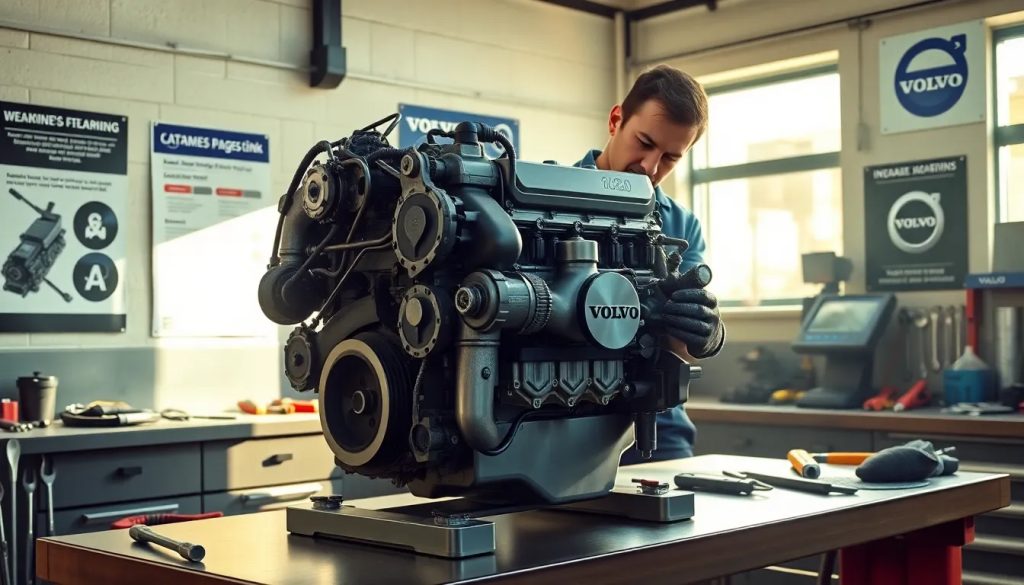2013 volvo d13 engine problems explained

The 2013 Volvo D13 engine is widely recognized for its performance and reliability. However, like any engine, it is not without its issues. Understanding these 2013 Volvo D13 engine problems can help users maintain their vehicles effectively and avoid significant repairs down the line. In this article, we will delve into the most common issues, symptoms, diagnostics, and maintenance tips pertaining to this engine.
- What are the most common 2013 Volvo D13 engine problems?
- What symptoms indicate 2013 Volvo D13 engine problems?
- How can you diagnose 2013 Volvo D13 engine issues?
- What are the most frequent 2013 Volvo D13 engine problems reported on forums?
- What should you know about starting problems in the 2013 Volvo D13 engine?
- What are the specs of the 2013 Volvo D13 engine?
- How reliable is the 2013 Volvo D13 engine?
- Related Questions About 2013 Volvo D13 Engine Problems
What are the most common 2013 Volvo D13 engine problems?
The 2013 Volvo D13 engine, while generally reliable, does have some recurring issues that users should be aware of. One of the most significant problems reported involves the camshaft. Many drivers have noticed failures around 350,000 miles, often accompanied by alarming noises.
Additionally, the aftertreatment system can present challenges. Injector sleeve leaks and EGR cooler failures are common, leading to coolant loss and starting difficulties. Regular inspections can help identify these issues early, potentially saving on costly repairs.
Another frequent complaint is related to performance issues, particularly when it comes to fuel efficiency. Users have reported a decline in mileage, which can be attributed to various factors, including inadequate maintenance or component wear.
What symptoms indicate 2013 Volvo D13 engine problems?
Identifying symptoms early can be crucial in addressing 2013 Volvo D13 engine problems. Common signs include:
- Tapping noises: Often indicative of camshaft wear, these sounds can signal impending failure.
- Starting difficulties: Trouble starting the engine can be linked to EGR cooler leaks or injector sleeve issues.
- Drop in fuel efficiency: A noticeable decrease in mileage could signify a performance issue that needs investigation.
- Coolant loss: This may be a direct result of leaks within the engine components, particularly the EGR cooler.
Understanding these symptoms can help drivers take proactive measures before facing catastrophic engine failures.
How can you diagnose 2013 Volvo D13 engine issues?
Diagnosing issues with the 2013 Volvo D13 engine can be challenging, but several steps can streamline the process.
First, conduct a thorough visual inspection of all engine components. Look for signs of oil or coolant leaks, particularly around the EGR cooler and injector sleeves.
Utilizing diagnostic tools is another effective method. Scanning the engine with an OBD-II tool can reveal error codes that point to specific issues, aiding in a more accurate diagnosis.
Additionally, performing routine maintenance, such as oil changes and filter replacements, can help prevent issues from escalating. Switching to thinner oils, like 10W30, has been reported to extend the engine's lifespan by ensuring better lubrication.
What are the most frequent 2013 Volvo D13 engine problems reported on forums?
Online forums have become a valuable resource for sharing experiences and solutions regarding the 2013 Volvo D13 engine problems.
Users frequently report issues like:
- Camshaft failures: Many drivers note similar mileage points where failures occur, emphasizing the need for vigilant monitoring.
- Aftertreatment system issues: Injector sleeve leaks and EGR cooler failures are a recurring topic, prompting discussions on repair costs and solutions.
- Turbo problems: Some users have mentioned the turbo compound causing performance degradation, requiring immediate attention.
These discussions often lead to shared solutions, which can be incredibly useful for anyone experiencing similar problems.
What should you know about starting problems in the 2013 Volvo D13 engine?
Starting problems in the 2013 Volvo D13 engine can stem from various factors. Many users have reported issues related to the EGR cooler and injector sleeves. If coolant is leaking, it can affect the engine's ability to start properly.
Another potential cause is the battery or starter motor. Regularly testing these components can help identify if they are functioning correctly or if replacements are needed.
In some cases, drivers have found that changing the engine oil to a thinner viscosity can improve starting performance, especially in colder climates. This adjustment can lead to better engine fluidity, aiding in quicker starts.
What are the specs of the 2013 Volvo D13 engine?
The 2013 Volvo D13 engine is known for its robust specifications, making it a popular choice among heavy-duty truck drivers.
Key specifications include:
- Displacement: 12.8 liters
- Horsepower: Ranges from 375 to 500 HP
- Torque: Available torque ranges between 1,450 to 1,850 lb-ft
- Fuel system: Common rail fuel injection, which enhances fuel efficiency and performance
These specifications not only contribute to its reputation for reliability but also highlight its capabilities in hauling and transporting heavy loads.
How reliable is the 2013 Volvo D13 engine?
The reliability of the 2013 Volvo D13 engine has been a topic of discussion among users and experts alike. Generally, it is regarded as a dependable engine, especially when properly maintained. Many drivers report achieving over 650,000 miles with regular servicing, which speaks to its long-term durability.
Nevertheless, certain issues, such as camshaft wear and aftertreatment system challenges, can affect overall reliability. Users are encouraged to prioritize maintenance, including regular oil changes and thorough inspections, to mitigate potential problems.
While there are some concerns regarding specific components, overall, the 2013 Volvo D13 engine is considered a solid investment for those who value engine reliability and performance.
Is the Volvo D13 engine good or bad?
The Volvo D13 engine has garnered a reputation for being a robust piece of machinery. However, it is essential to recognize both its strengths and weaknesses. While many users report positive experiences regarding its performance and fuel efficiency, challenges like camshaft failures and aftertreatment system leaks have raised concerns. Overall, it is deemed a good engine but requires attentive maintenance.
What is the life expectancy of the Volvo D13 engine?
Typically, the life expectancy of the Volvo D13 engine can reach over 650,000 miles with proper care. Regular maintenance, timely inspections, and addressing issues as they arise can significantly enhance its longevity. It's vital to monitor wear indicators closely, particularly around the camshaft, to ensure optimal performance.
What is the problem with the Volvo D13 turbo compound?
Issues concerning the Volvo D13 turbo compound often relate to performance degradation. Drivers have reported a reduction in power and efficiency, which can be an indicator of a failing turbo. Regular checks and maintenance can help mitigate these problems, ensuring that the turbo operates efficiently and prolonging its lifespan.
How many miles is a DD13 engine good for?
The DD13 engine, like the D13, can typically last between 500,000 to 600,000 miles with appropriate maintenance. Ensuring regular oil changes and addressing any signs of wear early can help maximize the lifespan of the DD13 engine, similar to its Volvo counterpart.
 Engine crankcase ventilation hose disconnected volvo d13
Engine crankcase ventilation hose disconnected volvo d13 Volvo d13 engine brake solenoid issues and solutions
Volvo d13 engine brake solenoid issues and solutions Volvo D13 engine rebuild kit options
Volvo D13 engine rebuild kit options Volvo D16 engine specs and features
Volvo D16 engine specs and featuresIf you want to know other articles similar to 2013 volvo d13 engine problems explained you can visit the category VOLVO.
Leave a Reply

RELATED POSTS